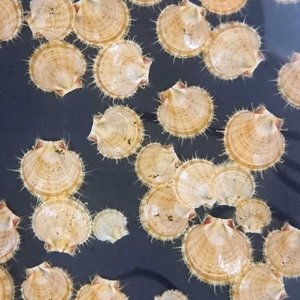Introduction
Milkfish, Chanos chanos (Forsskal), is an important food fish traditionally cultured in Southeast Asian countries, particularly the Philippines, Taiwan, and Indonesia. It is hardy, fast-growing, and eu- ryhaline. In the Philippines, about 211,000 ha of brackishwater ponds and 5,000 ha of freshwater fishpens are used for milkfish production (Fig. 1; Fishery Statistics Bulletin, 1991). In 1990, the Philippines produced 210,882 mt of milkfish - 191,878 mt from brackishwater and
19,004 mt from freshwater - valued at US$277,000. However, the fry needed to stock culture ponds and pens still come exclusively from coastal waters (Fig. 2). The 3-wk old fry are collected in large numbers during the breeding season. However, the annual recruitment of wild fry is unstable and is threatened by coastal pollution. The demand for milkfish fry has spurred studies on broodstock development, artificial propagation, and mass fry production in hatcheries to supplement the natural supply and eventually break the dependence on wild sources.
The difficulty in obtaining sexually gravid milkfish from the wild and the limited success in induced maturation and spawning prompted the development and establishment of milkfish broodstock. Significant achievements in the development of milkfish broodstock began in 1980 with the spontaneous maturation of 5-yr old milkfish held in floating net cages (Lacanilao and Marte, 1980). Since then, milkfish has consistently spawned naturally in floating net cages (Marte and Lacanilao, 1986). Recently, 8- and 9-yr old milkfish have spontaneously matured and spawned in concrete tanks (Emata and Marte, 1990; 1991). Natural spawnings of milkfish in both holding structures, together with mass fry production using hatchery technology developed by SEAFDEC/AQD (Gapasin and Marte, 1990), could definitely supplement and ultimately break the dependence on the natural supply of milkfish fry.
Author(s)
Emata, Arnil C.; Marte, Clarissa L.; Garcia, Luis Ma. B.
Publication
AQUACULTURE DEPARTMENT SOUTHEAST ASIAN FISHERIES DEVELOPMENT CENTER Tigbauan, Iloilo, Philippines. Aquaculture Extension Manual No. 20. 1992.
Click link below to download PDF.
management-of-milkfish-broodstock
management-of-milkfish-broodstock







